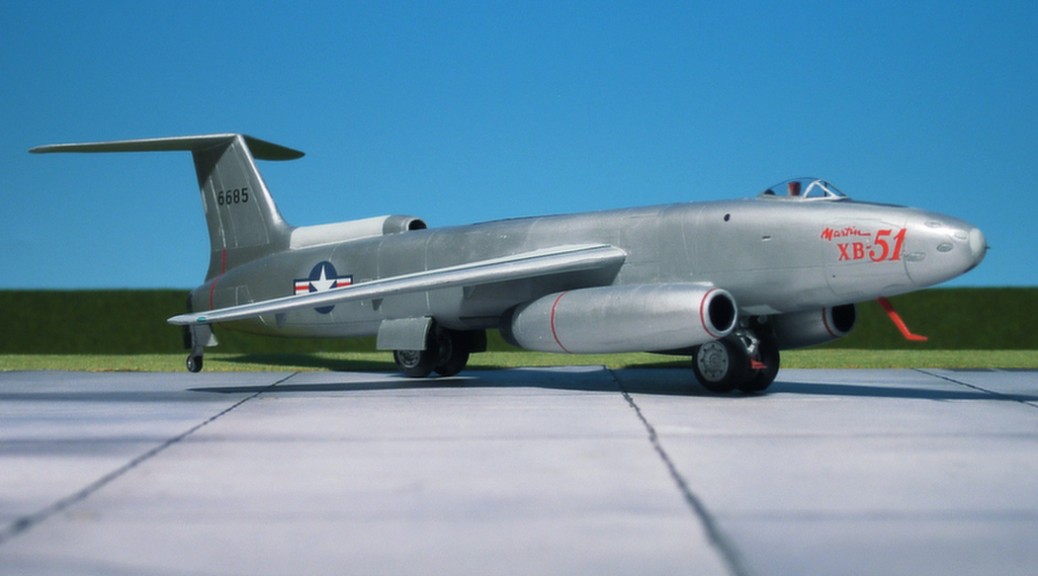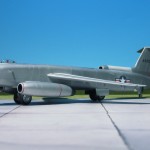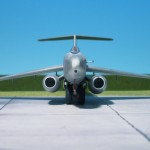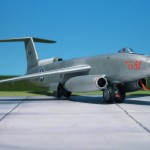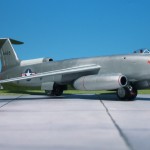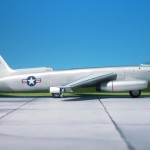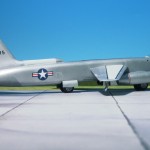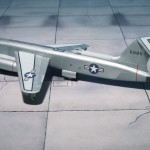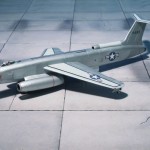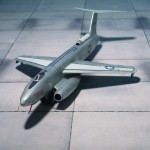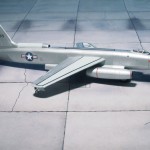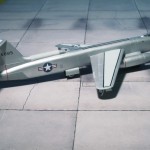TYPE: Ground attack aircraft
ACCOMMODATION: Pilot and operator/navigator
POWER PLANT: Three × General Electric J-47-GE-13 turbojet engines, rated at 2,700 kp each
PERFORMANCE: 645 mph
COMMENT: In early 1945, USAAF issued requirement for a new attack bomber for low-level bombing and close support as a successor to the Douglas A-26 Invader. Martin Company proposed its design and won the competition with designation, XA-45. Soon later USAAF revised its requirement for better close-support bombing. Martin accepted the new requirement and was received contract for two prototypes, the project was redesignated XB-51. The first XB-51 made its first flight on Oct 1949. The aircraft was powered by three jet engines: one at the extreme tail with an intake at the base of the tailfin, and two underneath the forward fuselage in pods. The innovative, variable incidence wings were swept at 35° and with 6° anhedral. The main landing gear consisted of dual sets of wheels in tandem in the fuselage with outrigger wheels at the wingtips. Crew provision was for a pilot under a “fighter”-type bubble canopy and for an operator/navigator in a compartment located lower than and to the rear of the cockpit. It became the fastest ground support bomber at the time. Although test flights were satisfying Martin XB-51 never went into production. Noteworthy is the fact that the design can be traced back to a German WWII-project Messerschmitt Me P.1102/105 that was to be powered by three Heinkel-Hirth HeS-109-011 turbo-engines, one in the extreme tail and two in pods under the extreme forward fuselage and provided with variable-sweep wings, too (Ref.: 24)
